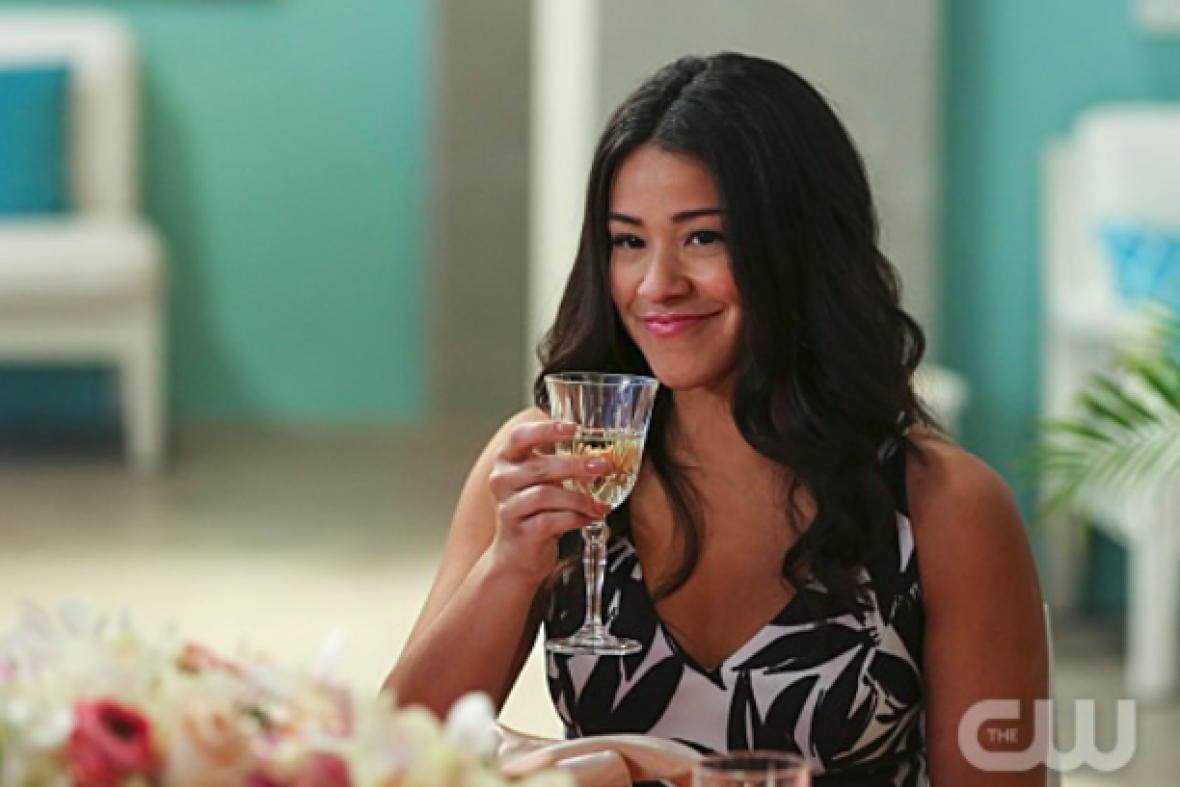Gilmore Girls, when it comes right down to it, is a show about white people in Connecticut spouting off pop culture references as rapidly as they can. For some people, that might be part of the appeal, an escape to an idyllic New England town—or a nightmarish one, depending on your point of view—free from any kind of political turmoil or social unrest. But that’s the same quality that made the show’s 2016 revival feel like such a fossil. Despite trading pagers for smartphones, A Year in the Life didn’t make much of an effort to keep up with the times, and its messy, half-hearted attempts to be more inclusive—by making one character gay and sprinkling some people of color in the background—only highlighted how poorly the show had aged. Thus we saw a slew of headlines like “The Heightened Sense of Privilege in Gilmore Girls: A Year in the Life” and the formation of entire Tumblrs dedicated to the revival’s many silent black background actors.
To understand just why this was so disappointing, we should remember that Gilmore Girls was actually fairly revolutionary for its time: This was the rare show that portrayed single motherhood—teenage single motherhood, no less—in an overwhelmingly positive, even fun, light. Sure, at times it was hard for Lorelai to raise her daughter without help, but it wasn’t usually the source of the show’s drama; Lorelai’s parenting struggles were the same ones as any parent who wasn’t going it alone, like dealing with teen heartbreak and resisting the interference of her parents. And Lorelai’s is a success story: Rory turned out to be a well-adjusted, hard-working teenager accepted by three of the most prestigious universities in the country.
But by the time the revival rolled around, none of that was revolutionary anymore. The shape of the American family is constantly changing, and a show about a single mother and her daughter doesn’t raise as many eyebrows today. A Year in the Life felt retrograde, but fortunately it won’t tarnish the glow of Gilmore Girls’ glory days, because there’s another show—also about a former single teen mom and her only daughter—that has been preserving and building on the show’s legacy over the past couple of years: Jane the Virgin.
Now in its third season on Gilmore Girls’ former home, the CW, Jane the Virgin was originally conceived as “Ugly Betty meets Gilmore Girls” by showrunner Jenna Snyder Urman, herself a onetime Gilmore Girls producer. Like Gilmore Girls, Jane the Virgin is preoccupied with the dreams, love triangles, and everyday lives of its female characters and keeps the pop culture references flying. Jane is a smart, independent young woman with literary aspirations, while her mother, Xiomara, dreams of starting her own business and clashes with her own more conservative mother. But as anyone who has watched even a single episode of Jane the Virgin knows, the show is also so much more than that, building on the very qualities that made Gilmore Girls so beloved.
As in Gilmore Girls, the women of Jane the Virgin feel real, which is crucial considering the show’s wild telenovela plot twists and surreal setting: Just as the Gilmore women inhabit the fictional Stars Hollow, a zany, strangely insulated community overseen by Taylor, a prissy, bearded know-it-all with a signature style (sweater vests), the Villanuevas spend much of their time in the zany, strangely insulated community that is the Marbella Hotel, overseen by Scott—a prissy, bearded know-it-all with a signature style (vests, the regular kind).
But while women of color were regulated to supporting roles in Gilmore Girls, they are at the forefront of Jane the Virgin. And rather than simply paying lip service to diversity, the show weaves Latino culture into its plotlines, making Catholicism central to the family’s way of life and engaging with social issues like immigration reform. It’s with those social issues, an area where the revival fell flat, that Jane the Virgin really shines. For instance, the Villanuevas struggle with money, much like the Gilmores once did before the days of Rory jetsetting back and forth across the Atlantic without a second thought. And it still seems incredible in retrospect that a show like Gilmore Girls, about a teenage mother, managed to get away with only the briefest of allusions to shmashmortion, and even then it is instantly dismissed without serious consideration.
That’s not to say that Gilmore Girls is pro-life, just that it wasn’t willing to engage with difficult subjects on screen, whatever its creator might say after the credits have rolled. Jane the Virgin has no such problem, with three different characters, including our protagonist, contemplating terminating their pregnancies over the course of three seasons, giving both the pro-life and pro-choice sides of the argument voice. And when a character finally does have an abortion, her greatest concern is hiding it from her mother, not regret for getting the procedure. They may experience telenovela plot twists, but a lot of their problems are grounded firmly in reality.
There’s so much to love about Gilmore Girls, and nostalgia from its original run carried the revival a long way. But it also felt stuck in the same era we left it in, because so little had changed in the nine years since we last saw Stars Hollow. It no longer felt real. So when it comes to choosing a successor to the original show, A Year in the Life is a nice coda. But Jane the Virgin gets the crown.
